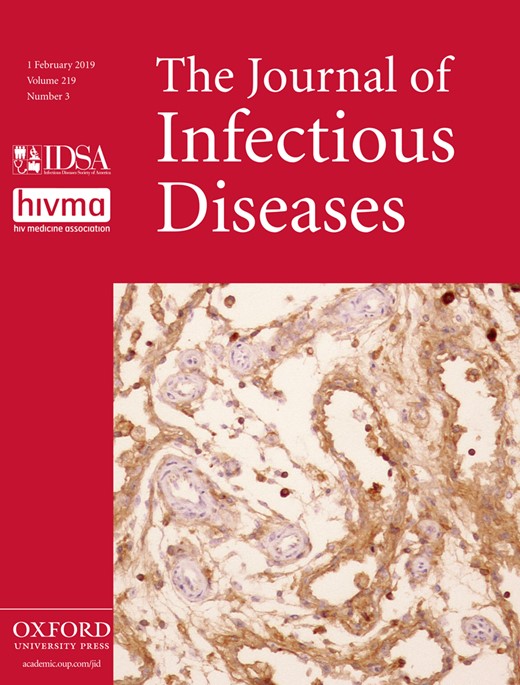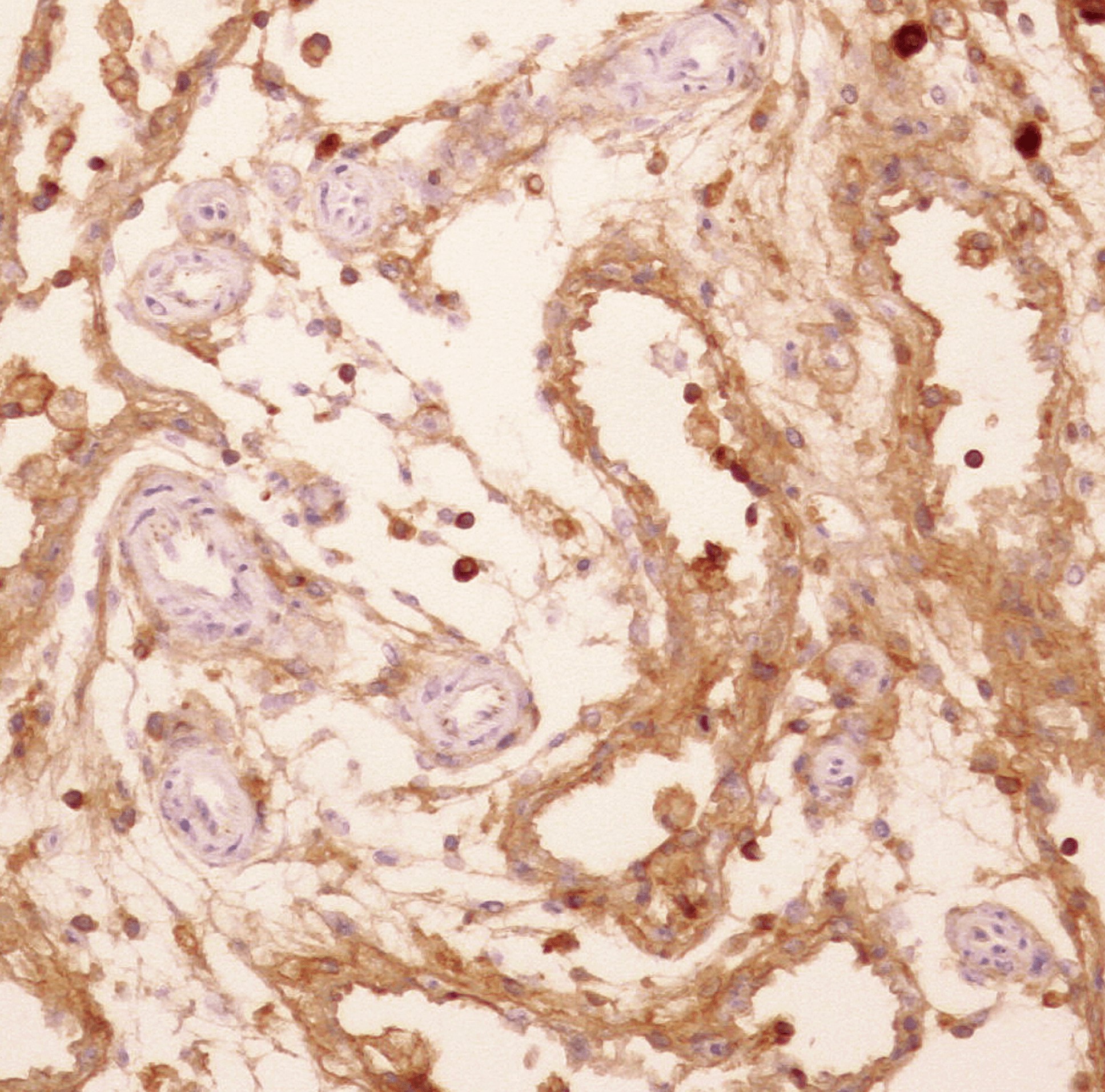
Cover image

Volume 219, Issue 3, 1 February 2019
EDITORIAL COMMENTARIES
The Value of Neuraminidase Inhibition Antibody Titers in Influenza Seroepidemiology
Understanding Causal Pathways in Cryptococcal Meningitis Immune Reconstitution Inflammatory Syndrome
MAJOR ARTICLES AND BRIEF REPORTS
VIRUSES
Risk Factors and Attack Rates of Seasonal Influenza Infection: Results of the Southern Hemisphere Influenza and Vaccine Effectiveness Research and Surveillance (SHIVERS) Seroepidemiologic Cohort Study
New Zealand’s seroepidemiological cohort study found that neuraminidase inhibition assay identified more influenza virus infections than hemagglutination inhibition assay. This result highlights the importance to measure serologically defined infections against not just hemagglutinin but also neuraminidase antigens in future seroepidemiologic cohort studies.
Mortality Associated With Acute Respiratory Infections Among Children at Home
Specific subgroups of children in socioeconomically vulnerable communities are at higher risk for dying at home from acute respiratory tract infection. This is the first study to provide at-home mortality rates due to respiratory syncytial virus and influenza A virus infection among infants.
Zika-Induced Male Infertility in Mice Is Potentially Reversible and Preventable by Deoxyribonucleic Acid Immunization
Male IFNAR−/− mice infected with ZIKV at an older age were shown to be infertile without overt signs of disease. This outcome was prevented by immunization with a DNA vaccine. A partial recovery of fertility was observed later after infection.
Serological Evidence of Japanese Encephalitis Virus Circulation in Asian Children From Dengue-Endemic Countries
Japanese encephalitis virus circulation has been demonstrated in urban areas of Indonesia, Malaysia, the Philippines, and Vietnam. Serological data indicate that up to 5% of children are infected annually.
Bivalent Human Papillomavirus Vaccine Effectiveness in a Japanese Population: High Vaccine-Type–Specific Effectiveness and Evidence of Cross-Protection
Proactive recommendations for human papillomavirus (HPV) vaccines in Japan have been suspended. In this study, bivalent HPV vaccine is highly effective against HPV types 16 (HPV16) and 18, and significant cross-protection against HPV31, 45, and 52 was demonstrated. These findings should reassure politicians of vaccine effectiveness in a Japanese population.
Severe and Complicated Varicella and Associated Genotypes 10 Years After Introduction of a One-Dose Varicella Vaccine Program
Severe hospitalized varicella cases still occur with a 1-dose varicella program, although predominantly in unvaccinated children. Children who are unimmunized or who are infected with clades of European origin are more likely to have severe hospitalized infection.
Association Between Environmental Factors and Oral Epstein-Barr Virus DNA Loads: A Multicenter Cross-sectional Study in China
Our multicenter cross-sectional study in China provided evidence linking the effect of host-environmental factors to oral Epstein-Barr virus (EBV) activity. Higher oral EBV loads tended to be detected in smokers, older participants, male participants, and participants in southern China.
An Exploratory Study of the Salivary Immunoglobulin A Responses to 1 Dose of a Norovirus Virus-Like Particle Candidate Vaccine in Healthy Adults
A bivalent norovirus virus-like particle vaccine administered intramuscularly induced salivary immunoglobulin A (IgA) responses to the homologous vaccine antigen that correlated with observed serum IgA responses.
Structural Characterization of Pan-Ebolavirus Antibody 6D6 Targeting the Fusion Peptide of the Surface Glycoprotein
In this article, we present the structure of a pan-ebolavirus antibody 6D6 in complex with multiple ebolavirus surface glycoproteins. This structural work implicates the fusion peptide of the glycoprotein as a site of immune vulnerability shared by all ebolaviruses.
FUNGI
Association Between Plasma Antibody Responses and Risk for Cryptococcus-Associated Immune Reconstitution Inflammatory Syndrome
Plasma IgM, glucuronoxylomannan-IgM, and β-glucan-binding IgM at the time of ART initiation were lower in HIV-infected individuals with cryptococcal meningitis who go on to develop C-IRIS than those who did not and inversely associated with development of C-IRIS.
HIV/AIDS
Food Insecurity Is Associated With Inflammation Among Women Living With HIV
Among a sample of women living with HIV in the United States, food insecurity was associated with elevated levels of proinflammatory cytokines interleukin-6 and tumor necrosis factor receptor 1, regardless of HIV control.
PARASITES
Screening for Pfhrp2/3-Deleted Plasmodium falciparum, Non-falciparum, and Low-Density Malaria Infections by a Multiplex Antigen Assay
A multiplex malaria antigen detection assay was developed to measure pan-Plasmodium antigens aldolase and LDH, and P. falciparum HRP2. Multiplex antigen detection allowed for prediction of malaria infection status, species of infection, and detection of Pfhrp2/3-deleted parasites.
BACTERIA
A Streptococcus suis Live Vaccine Suppresses Streptococcal Toxic Shock-Like Syndrome and Provides Sequence Type-Independent Protection
We constructed a capsular polysaccharide-expressing live vaccine against Streptococcus suis. Safety of the vaccine strain was evaluated in vitro and in vivo. Immunization with this live vaccine suppressed streptococcal toxic shock-like syndrome and conferred sequence type-independent protection.
The MmpS6-MmpL6 Operon Is an Oxidative Stress Response System Providing Selective Advantage to Mycobacterium tuberculosis in Stress
By using a novel luciferase system-based promoter probe, we identified oxidative stress as the trigger for MmpL6 expression in Mtb. Presence of a functional MmpL6 operon affords higher tolerance to oxidative stress/antibiotics in clinical strains of Mtb.
CD48 and α7 Nicotinic Acetylcholine Receptor Synergistically Regulate FimH-Mediated Escherichia coli K1 Penetration and Neutrophil Transmigration Across Human Brain Microvascular Endothelial Cells
FimH-induced E coli K1 penetration and PMN migration across HBMECs is mediated by the CD48-α7nAChR complex in lipid rafts of HBMECs through Ca2+ signaling and cytoskeleton rearrangement.
PATHOGENESIS AND HOST RESPONSE
A Th2-Type Response Is Associated With Exuberant Lesions in Pregnant Women Infected With Leishmania braziliensis
This study shows an association between the severe lesions observed in pregnant women infected with Leishmania braziliensis and the occurrence of a strong Th2-type response. This work provides evidence of an IL-4–mediated pathology in human L. braziliensis infection.
Seropositivity to Multiple Anogenital Human Papillomavirus (HPV) Types Is Associated With Current Anogenital HPV Infection, Abnormal Cytology, and Seropositivity for Nongenital HPVs
We found that seropositivity against at least 3 anogenital human papillomavirus (HPV) types is associated with current multiple anogenital HPV infections, abnormal cytology, and seropositivity to nongenital HPVs.
MICROBIOME
Gut Microbiota in Human Immunodeficiency Virus–Infected Individuals Linked to Coronary Heart Disease
Gut microbiota linked to coronary heart disease in HIV infection is characterized by reduced α-diversity and altered co-occurrence network despite insignificant differences in β-diversity. Sexual behavior affects β-diversity of the gut microbiota and should be considered in future studies.



